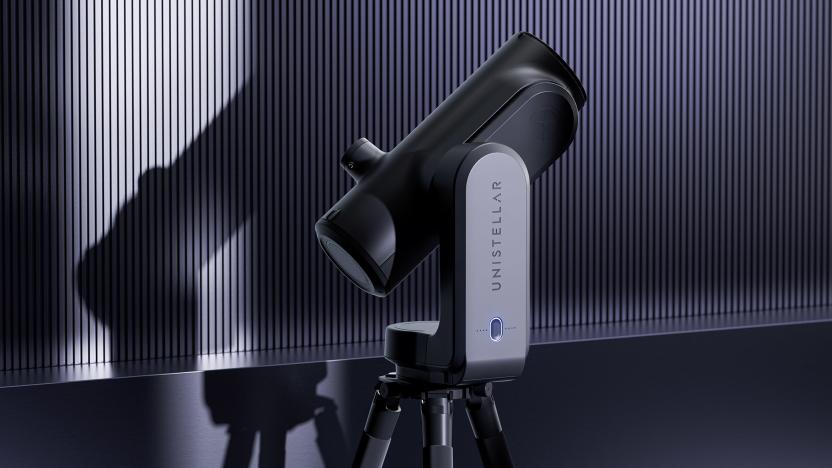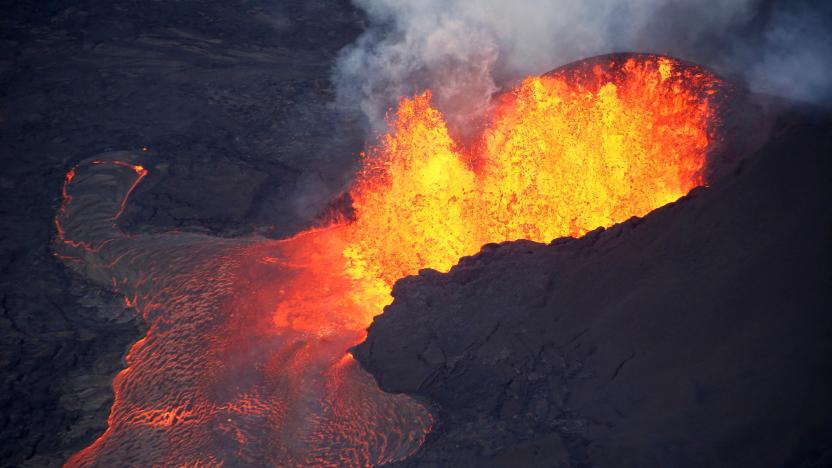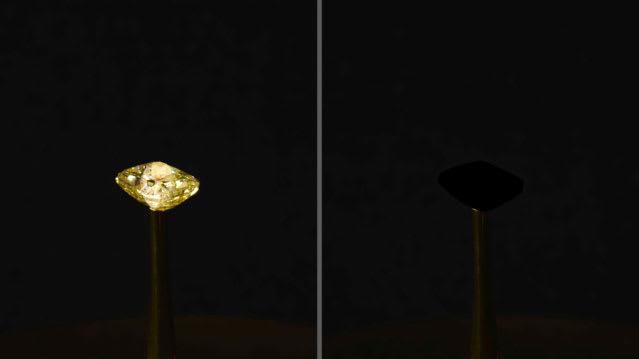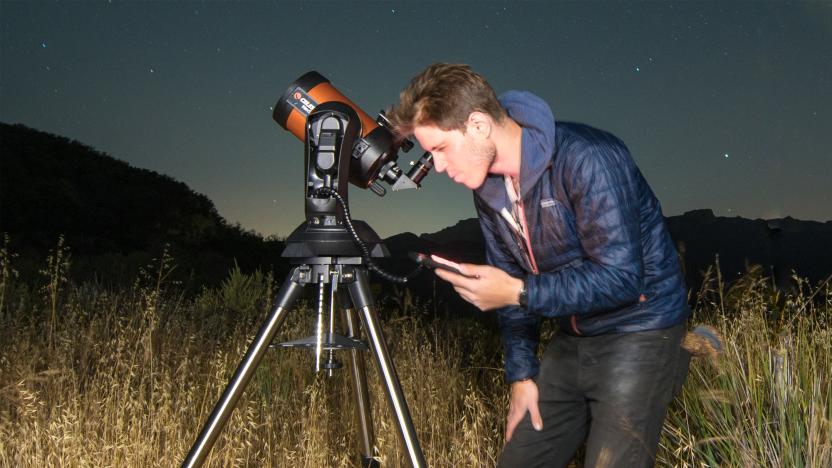telescopes
Latest

Unistellar's latest smart telescopes take the hassle out of backyard astronomy
French telescope company Unistellar has launched two new tech-infused models at CES 2024 promising to eliminate the tedious parts of backyard astronomy.

Hitting the Books: Volcanoes, mortal enemy of the mighty telescope
In The Last Stargazers: The Enduring Story of Astronomy's Vanishing Explorers, author Emily Levesque shines a light on today’s astronomers, a hearty breed of scientist willing to endure uncomfortable work conditions, odd hours, and some of the most remote sites on the planet for a chance to unlock the secrets of the cosmos. In the excerpt below, Levesque recalls the time a volcanic eruption in Washington state derailed a sky survey in Hawaii and led to one of the most epic log entries in scientific history. Telescopes actually have something of an interesting quirk when it comes to these tremors: they’re pointed so incredibly carefully and kept so incredibly still that even the tiniest and earliest shake of an earthquake can show up dramatically in the view of the telescope.

MIT scientists accidentally create the blackest material ever
Good news for goths -- black somehow just got even blacker. MIT engineers have cooked up a material that's 10 times blacker than anything else previously reported. Capturing more than 99.995 percent of any incoming light, the material is made of vertically aligned carbon nanotubes (CNTs) grown on chlorine-etched aluminium foil. And it was discovered by accident.

The best telescopes for beginners
By Colin Rosemont This post was done in partnership with Wirecutter, reviews for the real world. When readers choose to buy Wirecutter's independently chosen editorial picks, it may earn affiliate commissions that support its work. Read the full article here. Few things are as awe-inspiring as being out under a clear night sky, looking up, and gazing at a seemingly infinite array of stars overhead. So we gathered 10 telescopes (and one pair of binoculars), and after five months of star parties, we think the Celestron NexStar 5SE is the best telescope for a curious amateur. It gathers enough light for you to view the best features of our solar system, and it also gives you enough power to begin to explore deep-sky objects, a feature usually reserved for much more expensive options. In addition, this scope has an electronic GPS database that is preloaded with almost 40,000 celestial objects, and after you calibrate this model, it can scan the skies for you. You'll never be left wondering what to look at next.

This 46-gigapixel image is the biggest map of space ever made
Astronomers at Germany's Ruhr-Universitat Bochum have unveiled the largest space map ever compiled on Friday. The image is composited from some 268 individual shots captured over the past five years and spans a staggering 46 billion pixels. That's 855,000 by 54,000 pixels. "If you would want to display this in full resolution on full HD TV screens, you would need more than 22,000 screens," Moritz Hackstein, a PhD candidate who conducted the survey as part of his thesis, told CBS News.

I found a secondhand telescope, now what?
It's amazing what you can find on the streets of San Francisco. No, the actual city streets, not the '70s cop drama starring Michael Douglas. I recently came across a scavenger's treasure in the city's Sunset neighborhood: a fully operational Meade NG-70 Altazimuth Refractor Telescope. It was just sitting there on the curb with a handwritten note simply stating "Free" taped to its barrel. Now, I'll tell you, I'm not much of an astronomer -- inasmuch as I have never used (even touched) a telescope or ever had much interest in learning. The idea of standing around outside in the dark, fiddling with dials always seemed too much hassle to make very distant sparkly objects to appear slightly larger. But what I am also not is a sucker -- and a free telescope is a free telescope -- so into my car's trunk it went.

This telescope is really just 10 Canon lenses strapped together
Hunting for extremely dim galaxies is especially difficult with single-lens telescopes. That's because, no matter how technologically advanced, the device's design cannot fully eliminate detail-obscuring scattered light from the resulting images. The University of Toronto's Dragonfly Telephoto Array, however, deftly avoids that issue. This array -- one of the smallest multi-lens astronomy telescopes in use today -- is comprised of 10 Canon 400mm f/2.8 L IS II USM telephoto lenses, each costing $10,000. What's more, each lens is coated in a unique subwavelength nanomaterial that drastically reduces light reflection within the optic. And, like its insect inspiration, the Dragonfly's ten eyes can work in concert with one another to further reduce unwanted illumination in the resulting image, bringing out otherwise unseen detail in cosmic structures. According to the University of Toronto spokesman Roberto Abraham, this $100,000 system is ten times as accurate as its nearest rival. [Image Credit: U of Toronto]

NASA's new telescopes could spot alien life within 20 years
Convinced that there's got to be life on other planets? You're not alone in the universe -- in fact, many NASA scientists agree with you. And a panel convened recently by the space agency (see the video below) believes that finding it could happen soon, too -- perhaps "in twenty years" -- thanks to incoming telescope technology. Recent projects, like the Kepler Telescope, Dark Energy Survey and the Very Large Telescope have detected the presence of planets and even their atmospheres. But astronomers are even more excited about future projects like the Transiting Exoplanet Surveying Satellite (TESS) and James Webb Space Telescope, set to launch in 2017 and 2018, respectively.

9-gigapixel image of the Milky Way reminds us just how small we truly are
They say a picture is worth a thousand words, but this just leaves us speechless. Pictured above is a compressed 108,500 x 81,500 pixel image of 84 million stars across central parts of the Milky Way. Taken by the VISTA survey telescope at the ESO's Paranal Observatory in Chile, this 9-gigapixel photo is the result of thousands of individual images being meshed together. If it were printed out at the average resolution of a standard book it would measure a mind-boggling 9 x 7 meters. Using three separate infrared filters, VISTA is able to see through dust fields that normally obscure the view of an optical telescope. By studying this monumental image, astronomers hope to gain a better understanding of how galaxies form and evolve. If you'd like to take a look at this galactic work of art in its entirety, you can do so by visiting the source link below. (Image credit: ESO/VVV Consortium)

SKA radio telescope to pump out more data than the internet in 2020, spot ALF before he lands
Unfortunately for Desmond Dekker fans, this SKA telescope has nothing to do with the Jamaican music sensation. No, the Square Kilometer Array (SKA) radio telescope has much more otherworldly concerns, and according to the director of the International Centre for Radio Astronomy Research (ICRAR), Peter Quinn, it should have the internet beat in terms of data when it goes online in 2020. The telescope, which will end up in either Australia, New Zealand, or South Africa, is aimed at searching for Earth-like planets, extraterrestrial life, dark matter, and black holes, and will require a central supercomputer with "the processing power of one billion PCs." What's more, it is expected to be 10,000 times more powerful than any telescope in existence and "generate the same amount of data in a day as the entire planet does in a year." We say anything that gets us closer to having our very own hairy, Hawaiian-shirt sporting alien on hand is well worth the $2.1 billion it will cost to create. Willy!

VLT Survey Telescope snaps out-of-this-world photos with 268-megapixel camera
The European Southern Observatory (ESO) has just released the first batch of shots taken by its VLT Survey Telescope (VST), and, given the results, we'd say the thing's got a bright future in photography. Not to be mistaken for its cousin, the VLT (very large telescope), the VST sports a 268-megapixel camera, known as the OmegaCAM, and a field of view "twice as broad as the full moon." The images released by the ESO feature the Omega Nebula (located in the Sagittarius constellation) and Omega Centauri in stellar detail. Annie Lebovitz, eat your heart out -- the rest of you hop on past the break for another shot by this up and coming shutterbug.




